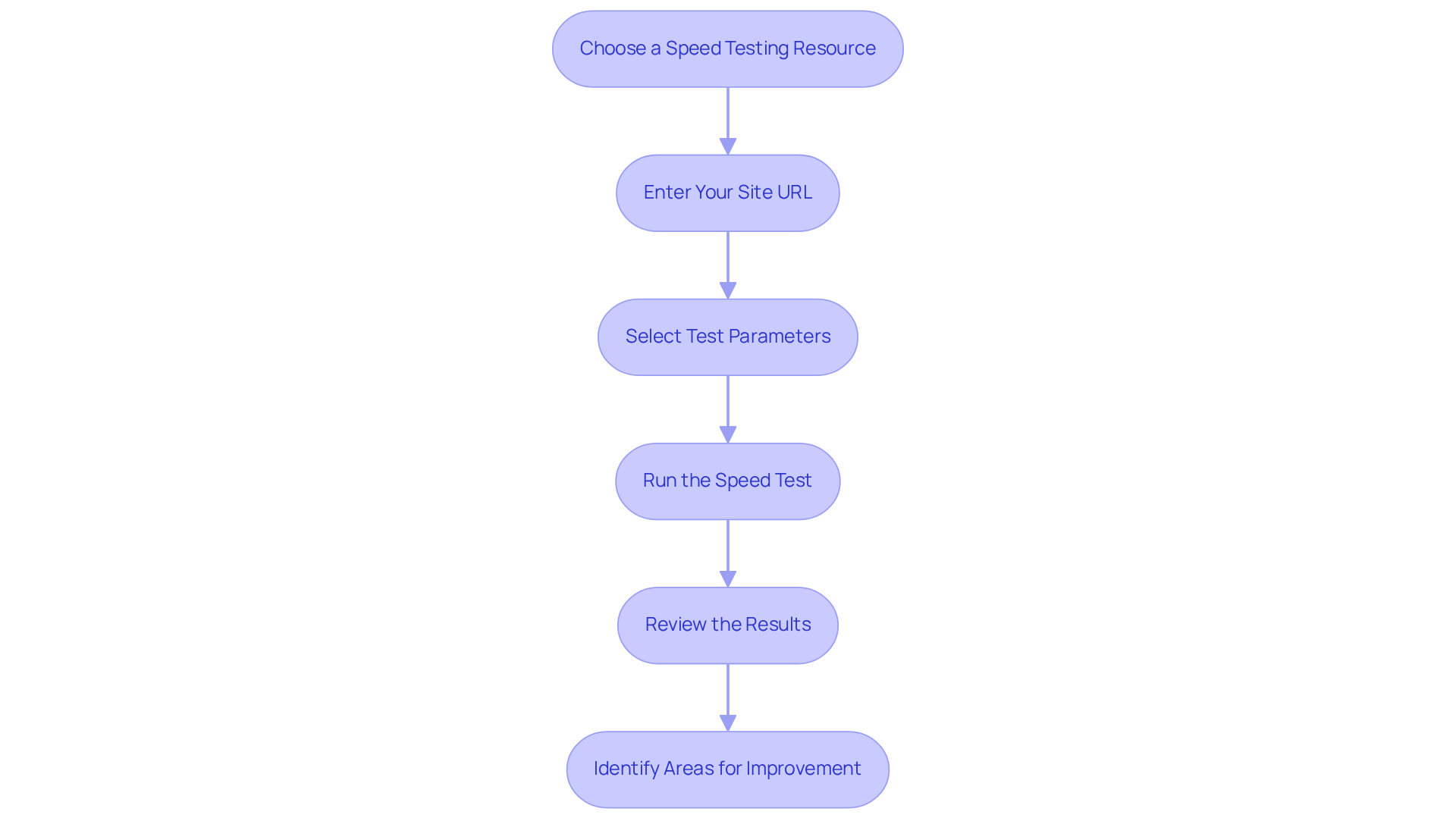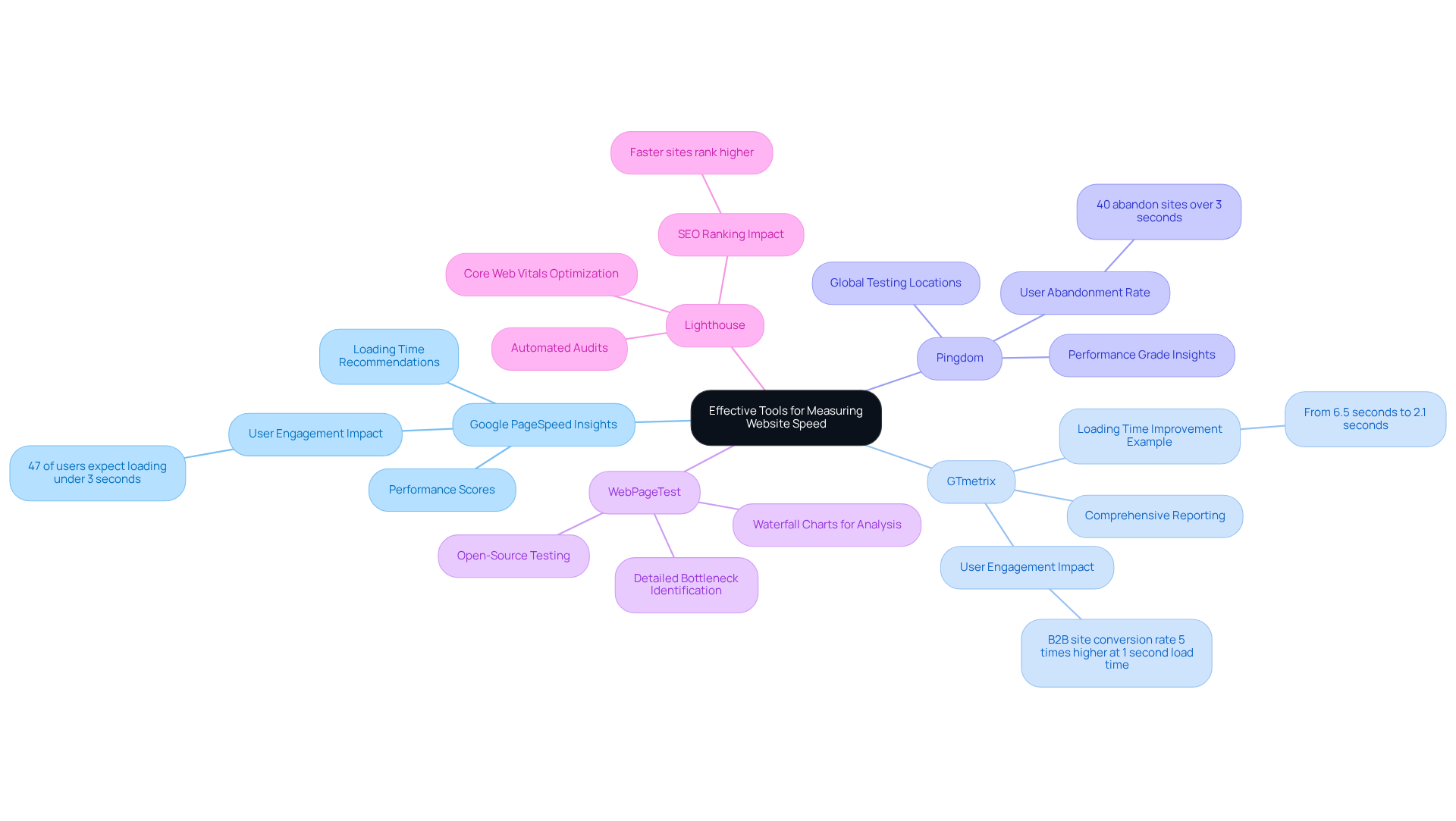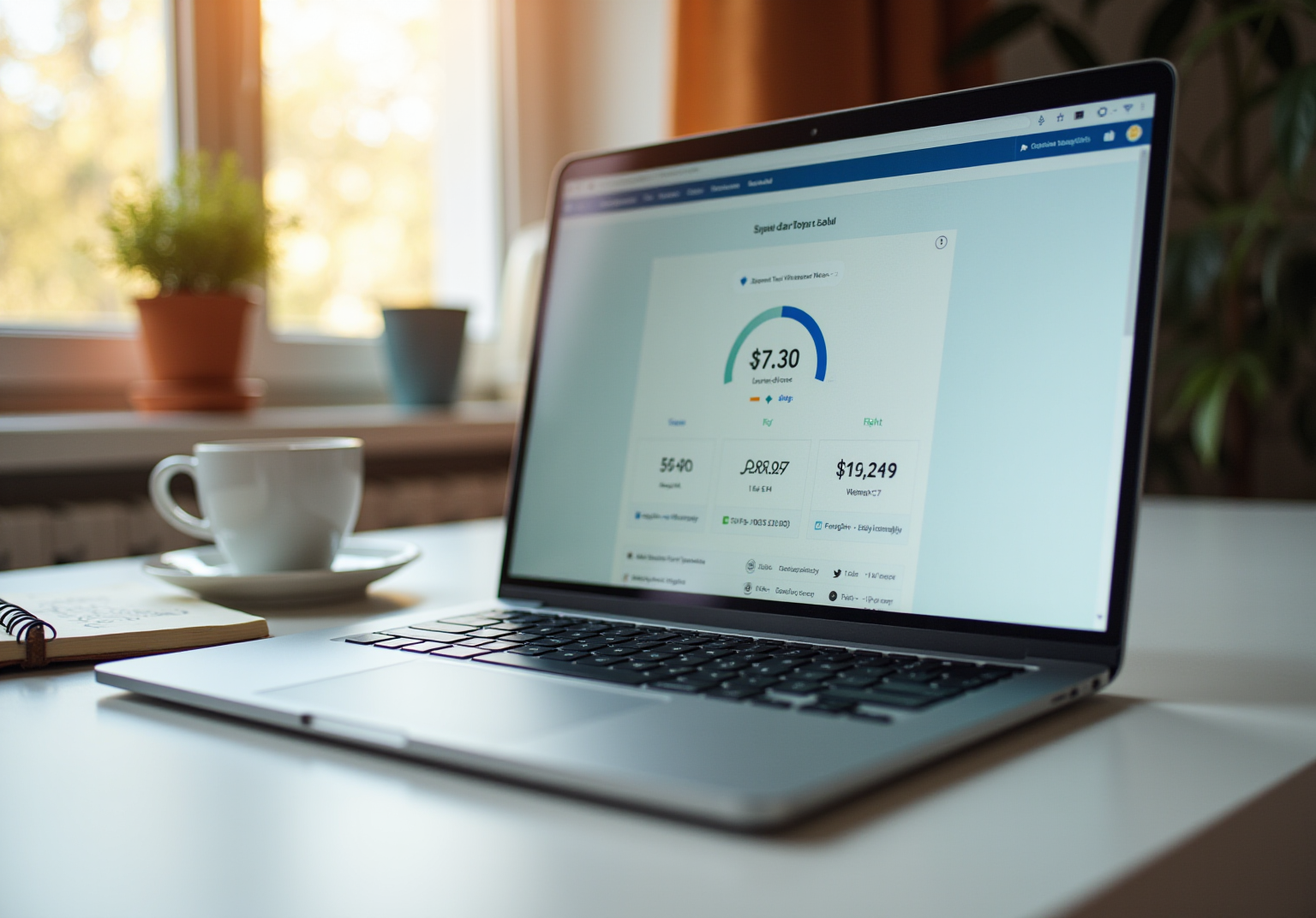
Overview
This article serves as a comprehensive guide for Direct-to-Consumer (DTC) brands aiming to optimize their website loading speed. It underscores the critical importance of fast loading times in enhancing user experience, boosting conversion rates, and improving SEO performance. By presenting compelling statistics and relevant case studies, the article establishes a strong foundation for understanding the impact of website speed.
Furthermore, it offers a detailed, step-by-step approach to conducting speed tests, troubleshooting common issues, and utilizing effective tools to enhance overall website performance.
Introduction
Website speed has emerged as a critical factor for Direct-to-Consumer (DTC) brands, fundamentally shaping user experiences and significantly influencing conversion rates. As online shoppers grow increasingly impatient, the stakes have never been higher: a mere delay in loading time can lead to lost sales and diminished customer loyalty. This article delves into essential steps for mastering website speed testing, equipping brands with the knowledge to optimize their online presence.
How can DTC brands turn speed into a competitive advantage and ensure they meet the ever-evolving expectations of their customers?
Understand Website Speed and Its Importance for DTC Brands
Website performance, particularly the speed test website loading time required for a webpage to appear, is an essential factor for DTC brands. Fast loading times are crucial for several reasons:
- User Experience: Slow websites frustrate users, leading to increased bounce rates. Studies indicate that 53% of users will , which emphasizes the importance of using a speed test website loading.
- Conversion Rates: Every second counts; a mere one-second delay in speed test website loading can reduce conversions by as much as 7%. Fast-loading pages, as shown by a speed test website loading, not only retain users but also encourage further exploration, significantly enhancing engagement. Parah Group's case studies reveal that brands have achieved up to a 35% increase in conversion rates through strategic optimizations, such as reducing load times and refining site navigation.
- SEO Impact: Search engines, particularly Google, prioritize websites based on a speed test website loading in their rankings. A sluggish site can diminish visibility and organic traffic, which makes using a speed test website loading vital for performance optimization to maintain a competitive edge.
- Customer Satisfaction: A seamless browsing experience is pivotal for fostering customer loyalty and repeat purchases. In fact, 70% of consumers indicate that page performance, assessed through a speed test website loading, influences their willingness to purchase from an online retailer, highlighting the importance of speed in driving sales. Parah Group's case studies show that brands have experienced significant increases in average order value (AOV) and customer retention through enhanced online performance.
In 2025, enhancing online performance is not merely a technical requirement; it is a strategic imperative for increasing profitability and customer satisfaction in the competitive DTC landscape. Case studies, such as Walmart's findings that for every 1-second improvement in speed test website loading, their conversion rate increased by 2%, further illustrate the tangible benefits of prioritizing speed. As user expectations evolve, ensuring fast loading times will be essential for success.

Follow Step-by-Step Instructions to Conduct a Speed Test
To conduct a speed test on your website, follow these steps:
- Choose a Speed Testing Resource: Select a reliable option such as Google PageSpeed Insights, GTmetrix, or Pingdom. Each resource provides distinct perspectives on your site's performance, including metrics such as Largest Contentful Paint (LCP) and Time to First Byte (TTFB).
- Enter Your Site URL: Navigate to the chosen tool and input your site's URL in the designated field.
- Select Test Parameters: If applicable, choose the location and device type for the test. Performing a website loading from different locations can uncover variations in response times and provide a more comprehensive view of your site's performance.
- Run the speed test website loading by clicking the 'Test' button to initiate the speed test. Wait for the software to evaluate your website, which may take a few moments depending on the complexity of your site.
- Review the Results: Once the test is complete, review the results. Focus on key metrics such as load time, page size, and the number of requests. A fully loaded time of under three seconds is ideal for maintaining user engagement.
- Identify Areas for Improvement: Pay attention to the suggestions provided by the tool. Common recommendations include optimizing images, reducing server response time, enabling compression for large files and images, and leveraging browser caching. Furthermore, consider the function of a Content Delivery Network (CDN) to improve loading times for a worldwide audience. Introducing these modifications can considerably enhance your site's performance and user experience.
By adhering to these steps, you can acquire valuable insights into your site's performance and pinpoint specific areas for enhancement, ultimately resulting in improved efficiency and increased conversion rates.

Explore Effective Tools for Measuring Website Speed
Efficient resources for assessing speed test website loading are essential for DTC brands aiming to enhance their online effectiveness. Here are some of the most impactful options:
- Google PageSpeed Insights: This free tool evaluates web page content and generates actionable suggestions to improve loading speed. It provides performance scores for both mobile and desktop versions, enabling brands to understand user experience across devices. Google recommends maintaining page loading durations below three seconds, as 47% of desktop users expect websites to load within this timeframe. Thus, this tool for speed test website loading is vital for meeting user expectations.
- GTmetrix: Renowned for its comprehensive reporting, GTmetrix assesses time to display, total page size, and the number of HTTP requests. It offers detailed insights and recommendations for improvement, making it a preferred choice among DTC brands. For example, a WooCommerce site utilizing GTmetrix improved its loading time from 6.5 seconds to 2.1 seconds after implementing suggested optimizations, significantly boosting user engagement and conversion rates. This improvement underscores the importance of speed test website loading, highlighting that a B2B site which loads in 1 second has a conversion rate 5 times greater than one that takes 10 seconds.
- Pingdom: This application facilitates testing from various global locations, providing a performance grade alongside detailed insights into elements that may hinder your site. Given that 40% of users abandon sites that take more than three seconds to load, utilizing a speed test website loading service like Pingdom to identify issues is crucial for retaining visitors.
- WebPageTest: An open-source application that conducts speed tests from different locations and browsers, , including waterfall charts that illustrate how each element of a page loads. This level of detail assists brands in pinpointing specific bottlenecks in their speed test website loading process.
- Lighthouse: Integrated into Chrome DevTools, Lighthouse is an automated tool that audits performance, accessibility, and SEO. It provides a comprehensive overview of an online platform's health, allowing brands to optimize for Core Web Vitals, which are critical for SEO rankings. As Google states, "Websites that load faster are more likely to rank higher in search engine results pages (SERPs), potentially leading to increased organic traffic to your site."
By leveraging these resources, DTC brands can effectively conduct a speed test website loading to assess website performance and identify specific areas for enhancement, ultimately resulting in an improved user experience and increased conversion rates.

Troubleshoot Common Speed Testing Issues
When conducting a speed test website loading, several typical problems may arise. Here’s how to effectively troubleshoot them:
- Inconsistent Results: If you observe varying results from different tools, it is essential to ensure that you are testing under similar conditions, such as the same location and device type. Additionally, check for any background processes that may be consuming bandwidth during the test, as these can skew results. A one-second delay in page load time can lead to a 7% decrease in conversions, underscoring the necessity of consistency.
- Slow Test Results: Should the speed test take an unusually long time to complete, it could be due to server issues or high traffic on the testing platform's end. To mitigate this, consider using a speed test website loading at different times or utilizing alternative testing tools that may provide more reliable results. Google recommends that your site should become accessible in under three seconds; thus, any delays must be addressed promptly.
- High Bounce Rates Despite Good Speed Scores: If your speed scores are satisfactory but bounce rates remain elevated, it is crucial to consider other influencing factors such as user experience, content relevance, and mobile optimization. A fast site alone is insufficient if the content fails to engage users effectively. Notably, 53% of mobile site visitors abandon a page if it takes longer than three seconds to load.
- Errors in Test Reports: If you encounter errors in the test results, verify potential issues such as incorrect URL entries, server downtime, or firewall settings that may obstruct the testing application. These factors can lead to misleading results. For instance, an incorrectly entered URL can skew the entire testing process.
- Understanding Metrics: If the metrics presented in the test results are confusing, consult the tool's documentation or help section for clarification. Understanding metrics like Time to First Byte (TTFB) and Largest Contentful Paint (LCP) is crucial, as they directly . Google emphasizes that your site should ideally load in 2-4 seconds on desktop and 4 seconds or less on mobile devices.
By addressing these common issues, you can significantly enhance the effectiveness of your speed test website loading process, ensuring that it yields accurate and actionable insights for optimizing your website's performance.

Conclusion
Fast website loading is not merely a technical necessity; it stands as a pivotal element for the success of DTC brands in an increasingly competitive landscape. The critical importance of optimizing website speed cannot be overstated, as it directly influences user experience, conversion rates, SEO rankings, and overall customer satisfaction. By ensuring that websites load swiftly, brands can significantly enhance user engagement and drive sales, making speed optimization a strategic imperative.
This guide has shared essential insights regarding the significance of website speed for DTC brands. Key arguments highlight how slow loading times lead to increased bounce rates, decreased conversions, and diminished visibility in search engine rankings. The step-by-step instructions provided for conducting a speed test empower brands to accurately evaluate their website performance. Furthermore, the exploration of effective tools and troubleshooting strategies equips brands with the knowledge to identify and address common speed-related issues.
In a digital environment where user expectations are continually rising, prioritizing website speed is essential for fostering customer loyalty and driving sales. DTC brands must take proactive steps to implement the strategies and tools discussed, ensuring they meet the demands of today's consumers. By doing so, brands can not only enhance their online performance but also secure a competitive edge in the ever-evolving e-commerce landscape.
Frequently Asked Questions
Why is website speed important for DTC brands?
Website speed is crucial for DTC brands because it directly affects user experience, conversion rates, SEO rankings, and customer satisfaction.
How does slow website speed impact user experience?
Slow websites frustrate users, leading to increased bounce rates. Studies show that 53% of users will abandon a site if it takes more than three seconds to load.
What is the effect of website speed on conversion rates?
A one-second delay in loading time can reduce conversions by up to 7%. Fast-loading pages not only retain users but also encourage further exploration, enhancing engagement.
How does website speed influence SEO?
Search engines like Google prioritize website speed in their rankings. A slow site can reduce visibility and organic traffic, making speed optimization essential for maintaining a competitive edge.
What role does website speed play in customer satisfaction?
A seamless browsing experience is vital for customer loyalty and repeat purchases. About 70% of consumers say that page performance affects their willingness to purchase from an online retailer.
What are some examples of improvements achieved through website speed optimization?
Brands have reported up to a 35% increase in conversion rates and significant increases in average order value (AOV) and customer retention through enhancements in online performance.
What are the long-term implications of website speed for DTC brands?
By 2025, improving online performance will be a strategic imperative for increasing profitability and customer satisfaction in the competitive DTC landscape.
FAQs











